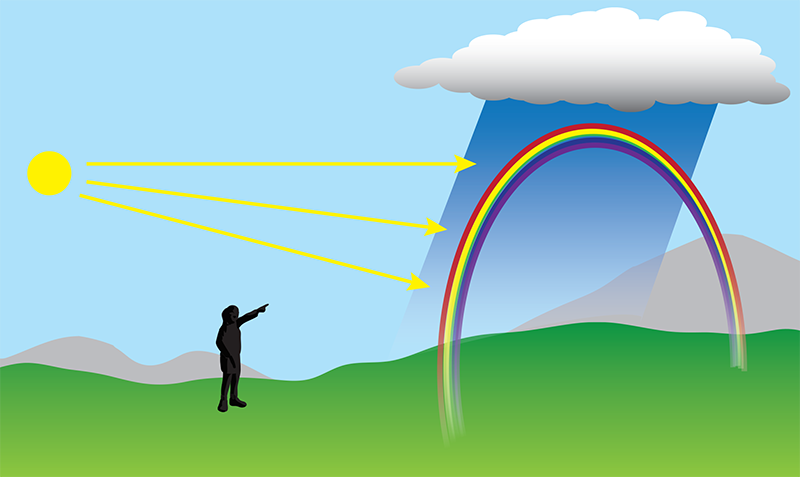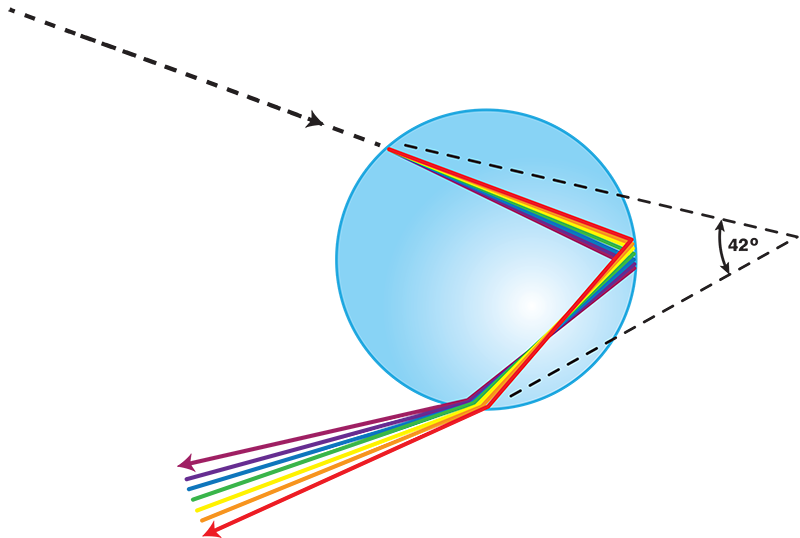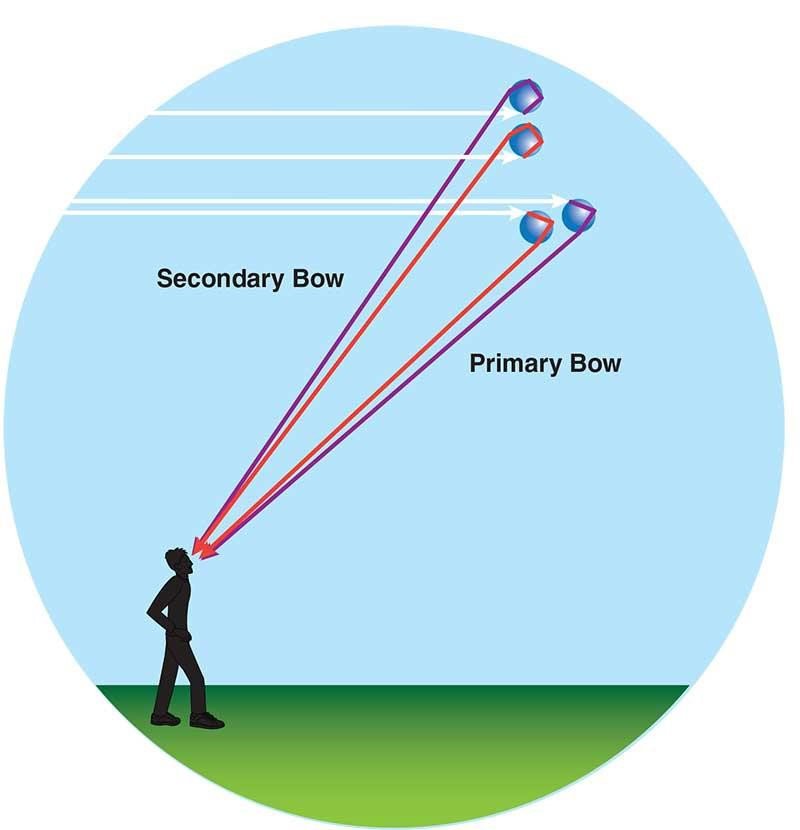April Showers Bring May Flowers … and Rainbows

Credit: National Oceanic and Atmospheric Administration
Ah, springtime in Virginia. Flowers are blooming, birds are singing and… it’s raining. But without rain, we wouldn’t have those lovely flowers nor would we have food to put on our tables. Rain also brings us the beautiful sky show we call a rainbow!
Seeing a rainbow has long been considered a promise of good things to come. During the stay-at-home orders due to COVID-19, rainbows have become a symbol of hope. Children, and adults too, are pasting them in windows as a hopeful message to passers-by. Rainbows are often mentioned in legends and folklore. How about the pot of gold at the end of a rainbow – have you ever found one? Probably not because you will never be able to reach the end of a rainbow. More on that later…

Credit: National Oceanic and Atmospheric Administration
How does a rainbow form? While it may seem like magic, it’s actually simple physics! Rainbows form when sunlight passes through raindrops in the air at exactly the right angle. As the light shines through the air into the more dense (and harder to pass through) liquid raindrop, it slows down and bends, known as refraction. When the light reaches the backside of the raindrop, it reflects back the way it came, bending and then speeding up as it exits the raindrop back into the air.
Visible light from the Sun is made up of a spectrum of wavelengths, or colors, of light and each wavelength bends at a different rate when passing through water, a process called dispersion. Violet light, the shortest wavelength that we can see, bends the most, while red light, the longest wavelength in the visible spectrum, bends the least. As the light exits the water drop, each color has been bent, or refracted, at different angles, resulting in the dispersion of light into a spectrum of colors. The differences in the refraction angle is why red is always at the top of the rainbow’s arc and violet is always at the bottom.
Rainbows always form when the sun is behind you, rain is in front of you, and any clouds have cleared away from the sun. Generally, rainbows are seen in the late afternoon as a rain shower moves past, due to the sun’s low angle being more ideal for rainbows.
Sometimes light is reflected twice within a raindrop! When this happens, you will see a “double rainbow.” The secondary rainbow is always slightly dimmer or more pastel in color than the primary one. Also in the secondary rainbow, you’ll notice that the colors are reversed - violet is on top and red on the bottom. While they are uncommon, double rainbows are not as rare as you might think.

Credit: National Oceanic and Atmospheric Administration
Did you know rainbows can actually occur at night as well? Moonbows, a somewhat rare phenomenon, occur when a bright full moon, low in the sky, shines on mist or a rain shower. Since the moon is nowhere near as bright as the sun, moonbows are often very dim and usually appear white to the naked eye.
Rainbows are not a “thing” you can touch; they are an optical illusion formed when conditions in the sky are just right. Have you ever noticed that you are always standing at the center of the rainbow you see? A rainbow would actually be a complete circle if the ground didn’t get in the way. You can sometimes see the entire rainbow circle from the height of an airplane. Since you are always at the center of the rainbow’s arc, you will unfortunately never get to that illusive pot of gold at the end.
So keep your eyes open for the next beautiful sky show put on by Mother Nature. April showers may bring May flowers and a day spent indoors, but they can also bring beautiful rainbows.